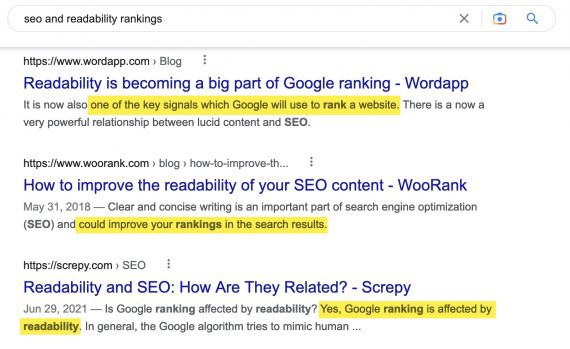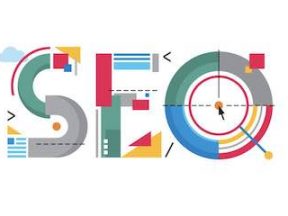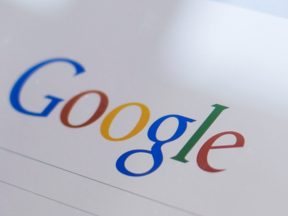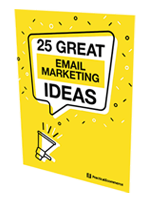The “readability” of text refers to its clarity and ease of understanding. Tools such as Flesch Kincaid and Gunning Fog Index can assign readability scores to articles, product descriptions, or any other passage.
For years, search engine optimizers have assumed content readability is a direct ranking factor. Many articles assert this.
But the claims are erroneous.
There’s no clear evidence of a readability metric in Google’s algorithm. Google’s John Mueller said as much in early 2018, stating readability is not a ranking factor to his knowledge.
Studies by Portent and Ahrefs did not find correlations between readability and organic positions.
Yet the myths persist. Yoast, the WordPress SEO plugin, adds to the confusion with its readability analysis, which appears in the backend alongside every article, implying a rankings impact.
Moreover, the myths are actually counterproductive. Suggesting a link between a software-driven readability score and rankings forces writers to please machines instead of humans.
And that’s a slippery slope. Many writers have told me their articles failed to rank despite perfect readability scores or keyword density or HTML headers or overall word counts. The content suffers because it’s aimed at search engines, not people.
Readability
Is readability important?
Of course. Readability in a generic sense is paramount, even for search engines. An easy-to-read, informative article — one that provides answers — attracts humans, who share it and link to it. They tell their friends about it.
But I prefer the concept of “cognitive fluency” more than “readability” because it focuses on educational benefits rather than ease of reading. It goes beyond grammar and passive sentences. An article explaining a blue circle is more useful with an (accessible) illustration than text alone.
Readability Tools
Readability tools are helpful in the sense that grammar checkers are helpful. But not for SEO.
For example, I use Yoast’s readability checks to catch too-long sentences or paragraphs.
And I’m always mindful of the audience. An article for professional search optimizers requires more detail than one for a typical business owner. Medical articles are bound to have specialized terms and complex explanations.
Similarly, readability varies depending on its purpose. Some Google queries seek explanations of unfamiliar topics. That content should contain quick and easy-to-comprehend answers.
SEO
Still, we want our content to rank organically. Adhering to basic rules is key — such as using the same words as searchers and inserting meaningful HTML subheadings. Yoast’s plugin helps with subheadings, but I often ignore its other suggestions.
For example, Yoast recommends using “transition words,” but I tend to avoid them. I use “consecutive sentences,” such as in lists where each bullet starts with the same word, but Yoast suggests otherwise.
In short, I don’t pay much attention to an actual readability score. It doesn’t consider the niche, the goal of an article, or my own writing style.







